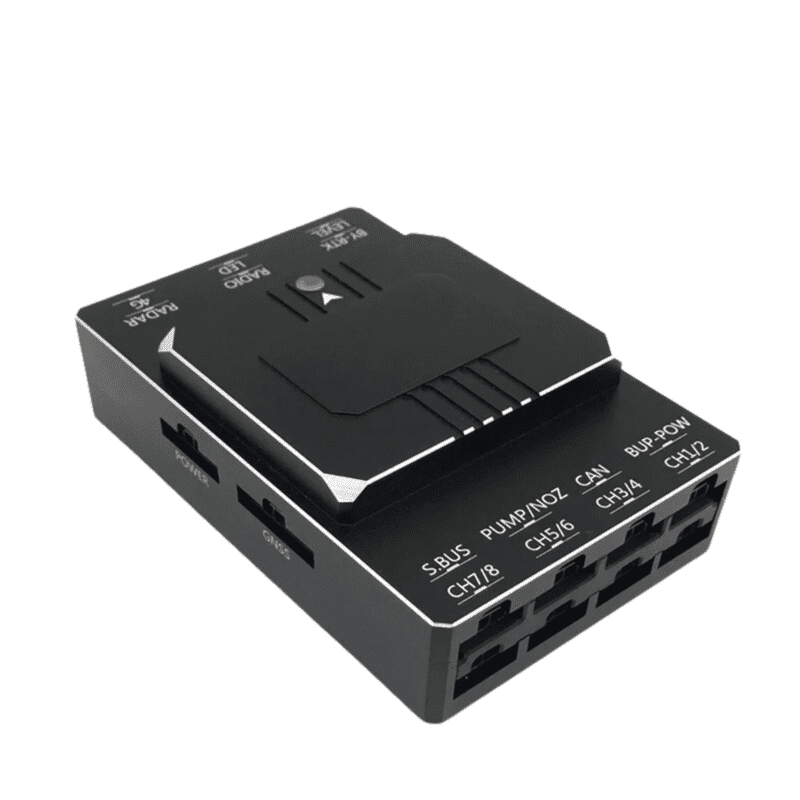SparkNavi Drone Flight Controller and GNSS/INS Made in Taiwan: Accuracy Navigating for Drones
SparkNavi Drone Flight Controller and GNSS/INS Made in Taiwan: Accuracy Navigating for Drones
Blog Article
Discovering the Function of Drone Flight Controllers in Enhancing Flight Security and Navigating Performance
The innovation of drone technology has significantly boosted the significance of trip controllers, which function as the brain of these airborne cars. By integrating real-time data from a variety of sensing units, flight controllers improve trip stability and navigating effectiveness, guaranteeing that drones can operate efficiently even in complicated environments. This discussion will certainly discover the essential components that add to these renovations, as well as the ramifications for the future of autonomous trip. What advancements exist ahead that could additionally change the capabilities of drone flight controllers?

Understanding Trip Controllers
Flight controllers are integral parts in the functioning of drones, working as the brains that stabilize and handle flight procedures. These advanced tools procedure data from various sensors, including accelerometers, gyroscopes, and GPS, to make certain that the drone keeps its designated flight path. The trip controller translates this information and implements commands based on pre-defined algorithms, making it possible for the drone to reply to ecological adjustments, such as wind or obstacles.
The key feature of a flight controller is to keep stability throughout trip. It achieves this by making real-time changes to the drone's motors and control surface areas, ensuring equilibrium and control. Additionally, modern-day flight controllers integrate sophisticated features such as waypoint navigating, permitting automated flight courses and enhanced functional efficiency.
Comprehending the style of flight controllers is vital for both hobbyists and specialists. As modern technology developments, trip controllers have actually ended up being more small and capable, incorporating synthetic knowledge to enhance decision-making procedures and adapt to intricate trip situations.
Secret Components of Flight Stability
Attaining optimum trip security in drones counts on several key components that operate in concert to make sure smooth and controlled procedures. Central to this security is the flight controller itself, which processes data from various sensing units to maintain the wanted trip mindset. This includes accelerometers and gyroscopes that gauge motion and orientation, permitting real-time changes to the drone's placement.
One more crucial element is the electronic rate controllers (ESCs), which control the power supplied to the motors. By carefully tuning motor rates in feedback to trip controller commands, ESCs help keep balance and counteract disturbances triggered by wind or sudden activities.
In addition, the layout of the drone's framework plays a crucial function in trip security. A well-structured framework reduces resonances and boosts the total aerodynamic account, contributing to smoother trip characteristics. Finally, the combination of innovative formulas within the flight controller aids in anticipating adjustments, making sure a adaptable and receptive trip experience.
Together, these elements create a cohesive system that enhances a drone's stability, permitting accurate maneuvering and improved performance in numerous flight problems.
Navigation Efficiency Methods
Performance in navigation is vital for maximizing drone procedures, particularly in intricate atmospheres. Reliable navigation strategies boost the capacity of drones to go across challenging terrains and avoid barriers, thereby improving operational performance and safety.
One noticeable technique is the application of sophisticated GPS and inertial measurement systems (IMUs) that provide accurate location tracking and orientation data. These innovations enable drones to determine ideal flight paths in real-time, thinking about various elements such as wind conditions and potential challenges.
An additional strategy includes making use of formulas for course preparation and optimization. Formulas such as A * and Dijkstra's algorithm can be released to establish the most efficient route while minimizing power intake go to this site and trip time. Moreover, integrating equipment learning designs can allow drones to adaptively discover from their atmospheres, improving navigation capacities via experience.

Influence On Autonomous Drones
The combination of advanced navigating strategies has actually exceptionally transformed the capacities of independent drones, enabling them to operate with better freedom and precision. SparkNavi drone flight controller and GNSS/INS made in taiwan. These enhancements are primarily credited to advanced flight controllers that make use of real-time information processing and sensor blend, enabling drones to navigate intricate atmospheres perfectly
The influence on independent drones prolongs past simple navigation; it incorporates enhanced obstacle evasion, enhanced security during vibrant conditions, and raised mission dependability. By leveraging algorithms that incorporate artificial intelligence and expert system, drones can adapt to transforming circumstances, making notified choices that maximize their flight courses while minimizing dangers.
Moreover, the execution of durable trip controllers has actually helped with the implementation of complex tasks, such as airborne evaluations, delivery solutions, and agricultural tracking, with marginal human intervention. This capacity not only streamlines operations yet additionally reduces human error, therefore enhancing general safety and security.
Because of this, the functional range of self-governing drones has broadened dramatically, making them essential devices in various markets. Their ability to carry out efficiently in varied circumstances underscores the vital duty that advanced trip controllers play in shaping the future of unmanned aerial systems.
Future Patterns in Trip Control
Regularly, innovations in flight control innovation are positioned to redefine the landscape of drone procedures in the coming years. Emerging patterns suggest a considerable change in the direction of enhanced man-made intelligence (AI) integration, making it possible for flight controllers to process real-time information a lot more effectively. This evolution will facilitate enhanced decision-making abilities, allowing drones to adapt to dynamic environmental conditions autonomously.
Furthermore, the implementation of artificial intelligence algorithms is expected to boost anticipating upkeep, thus reducing downtime and prolonging the lifecycle of drone parts. This aggressive strategy to maintenance will certainly be important as drone applications increase throughout different industries, from farming to logistics.

.jpg)
Last but not least, improvements in safe interaction protocols will deal with security and governing concerns, making certain that drones can operate effortlessly in busy airspaces (SparkNavi drone flight controller and GNSS/INS made in taiwan). Jointly, these patterns direct in the direction of a future where trip control systems are not just smarter and much more effective but also qualified of operating safely in an increasingly integrated airspace
Conclusion
In verdict, drone trip controllers are important to boosting flight stability and navigating performance via the sophisticated processing of sensing unit data. By keeping optimal flight mindsets and utilizing sophisticated formulas for course optimization and challenge avoidance, these controllers considerably add to the freedom and operational security of drones. As technology remains to advance, further improvements in trip control systems are prepared for, promising enhanced efficiency and increased capacities in the world of unmanned airborne cars.
By integrating real-time data from a range of sensors, flight controllers improve flight stability and navigation performance, ensuring that drones can run smoothly even in complex view environments.Flight controllers are essential components in the functioning of drones, offering as the minds that take care of and maintain trip operations. Additionally, contemporary trip controllers include advanced functions such as waypoint navigation, allowing for automated flight paths and enhanced operational effectiveness.
Central to this stability is the trip controller itself, which refines information from different sensors to keep the preferred flight mindset.In conclusion, drone trip controllers are essential to enhancing trip security and navigation performance with the sophisticated handling of sensing unit data.
Report this page